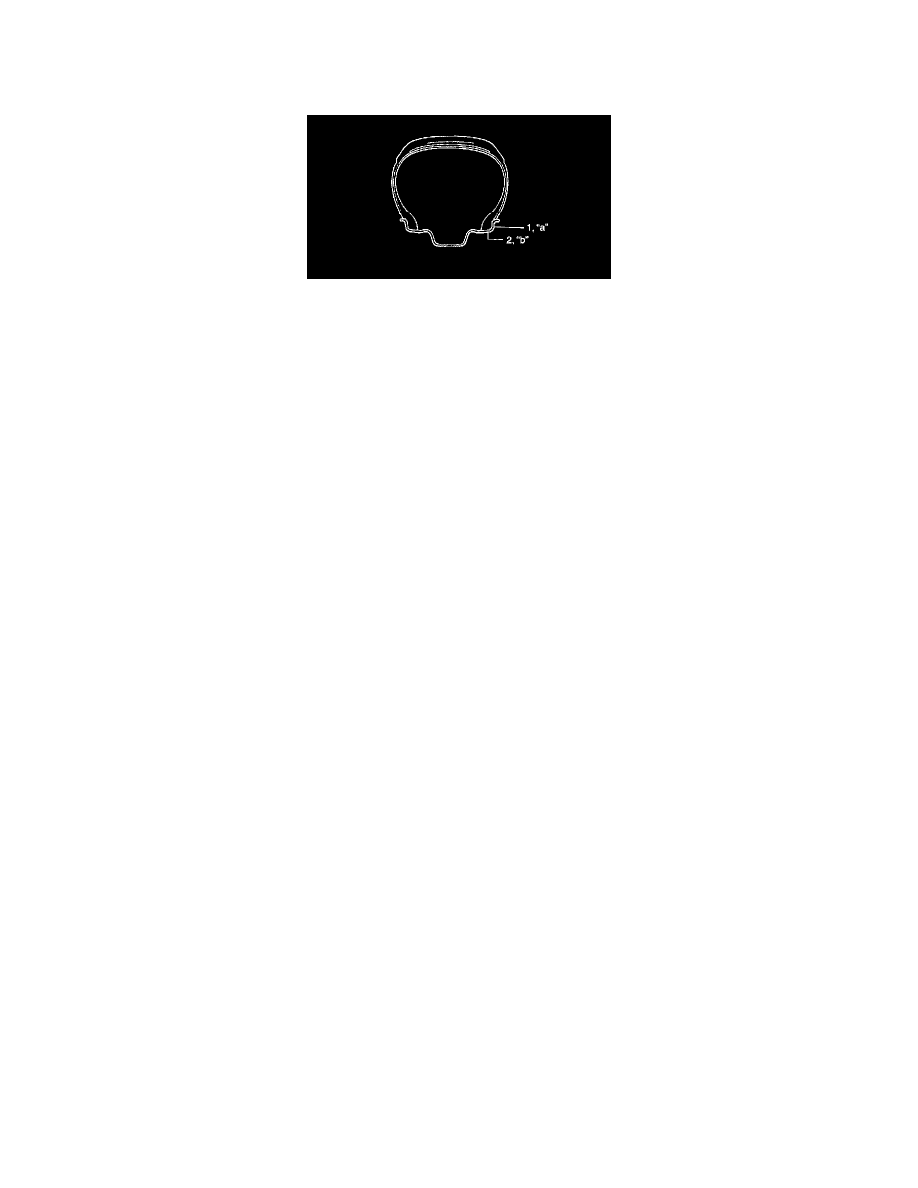Aerio L4-2.3L (2006)

Wheels: Service and Repair
Replacement Wheels
Replacement Wheels
Wheels must be replaced if they are bent, dented, have excessive lateral or radial runout, air leak through welds, have elongated bolt holes, if lug nuts
won't stay tight, or if they are heavily rusted. Wheels with greater runout than shown in the following may cause objectional vibrations.
Replacement wheels must be equivalent to the original equipment wheels in load capacity, diameter, rim with offset and mounting configuration. A
wheel of improper size or type may affect wheel and bearing life, brake cooling, speedometer/odometer calibration, vehicle ground clearance and tire
clearance to body and chassis.
How to Measure Wheel Runout
To measure the wheel runout, it is necessary to use an accurate dial indicator. The tire may be on or off the wheel. The wheel should be installed to
the wheel balancer of the like for proper measurement.
Take measurements of both lateral runout (1) and radial runout (2) at both inside and outside of the rim flange. With the dial indicator set in place
securely, turn the wheel one full revolution slowly and record every reading of the indicator.
When the measured runout exceeds the specification and correction by the balancer adjustment is impossible, replace the wheel. If the reading is
affected by welding, paint or scratch, it should be ignored.
Lateral runout limit
"a": 1.40 mm (0.055 inch)
Radial runout limit
"b": 1.14 mm (0.045 inch)
